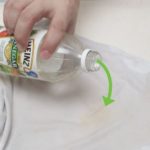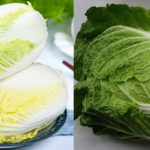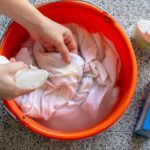The best time to wash the áo dài is right after wearing it, because for active children, it is inevitable that the áo dài will have many stains. Stains that stay on the clothes for a long time will become harder to remove. After treatment, the fabric of the áo dài will become weaker and more worn out.
– Hand washing is better than machine washing
It is recommended to hand wash the áo dài with detergent or specialized laundry liquid, especially for high-quality children’s áo dài. The details on the áo dài are delicate, and machine washing can compromise their durability.
In case you don’t have time and have to machine wash, you should put the áo dài in a separate laundry bag. This prevents the áo dài from directly contacting other clothes, and remember to set the washing machine to the gentlest cycle!
– Choose the appropriate washing method based on the fabric
+ For high-quality satin and brocade children’s áo dài, it is best to hand wash them, as machine washing can cause color fading and fabric damage.
+ Silk áo dài should be dried in a cool and airy place, avoiding direct sunlight, as it can make the fabric stiff and fade.
+ For linen áo dài, avoid washing with water hotter than 40 degrees Celsius, as linen tends to shrink rather than stretch compared to other fabrics. When washing linen áo dài, do it gently, without wringing or rubbing too hard.

Some tips for washing high-quality children’s áo dài
– Wash the áo dài right after wearing
The best time to wash the áo dài is right after wearing it, because for active children, it is inevitable that the áo dài will have many stains. Stains that stay on the clothes for a long time will become harder to remove. After treatment, the fabric of the áo dài will become weaker and more worn out.
– Remove yellow stains on the áo dài
Áo dài, unlike other types of clothing, is made of multiple layers of fabric to maintain its shape. Therefore, it has a lower moisture absorption rate than other types of clothing. Especially in hot weather, children tend to sweat, causing yellow stains on the áo dài, especially white ones. When encountering this problem, you can use lemon or vinegar and salt to treat it.
+ Fresh lemon:
Lemon has natural whitening properties, making it safe for both colored and white fabric.
How to do it: Cut the lemon to extract the lemon juice. Apply the lemon juice directly to the stained area and leave it in a cool area for 5-10 minutes for the lemon juice to seep into the fabric and take effect. Then, wash the áo dài again and let it dry.
+ Vinegar and salt:
Mix vinegar and salt in a bucket of water. Soak the stained clothes in the water for 30 minutes. Then, gently rub and thoroughly wash the clothes again.
When drying the áo dài, choose sunny days, avoid humid days without sunshine, as the áo dài can become damp and prone to mold when drying.

How to preserve áo dài
To keep the áo dài looking neat and beautiful when wearing, you should iron it straight and then hang it on a hanger in the wardrobe. When ironing the áo dài, turn it inside out and use the lowest heat setting. If using an iron, it is advisable to place a damp cloth on the surface or spray water on the fabric before ironing to make the fabric straight and smooth quickly.
– Mothers often think that they should dry the áo dài under direct sunlight to dry it quickly. In fact, intense sunlight will make the fabric dry, stiff, and even fades. The best way is to dry the áo dài in a well-ventilated and moderately sunny place or in the shade.
– The best way to iron high-quality children’s áo dài is to use a steam iron and turn it inside out, at the lowest heat setting. If using a regular iron, it is best to place a damp cloth on the surface or spray water on the fabric before ironing to make the fabric straight and smooth.
– Do not store the áo dài in plastic bags, as the áo dài will easily become stained and faded.
– If you do not wear the áo dài regularly, you should fold it neatly and put it in a clean bag, then place it in the wardrobe to keep the áo dài clean, soft, and free from dust.
In conclusion,
Throughout the periods and stages of Vietnam’s history, the áo dài has still existed and become a traditional costume, a symbol of the nation’s culture. Let’s dress our children in traditional áo dài with a modern touch, so they can look beautiful during Tet and feel the fascination of Vietnam’s traditional costume.




































